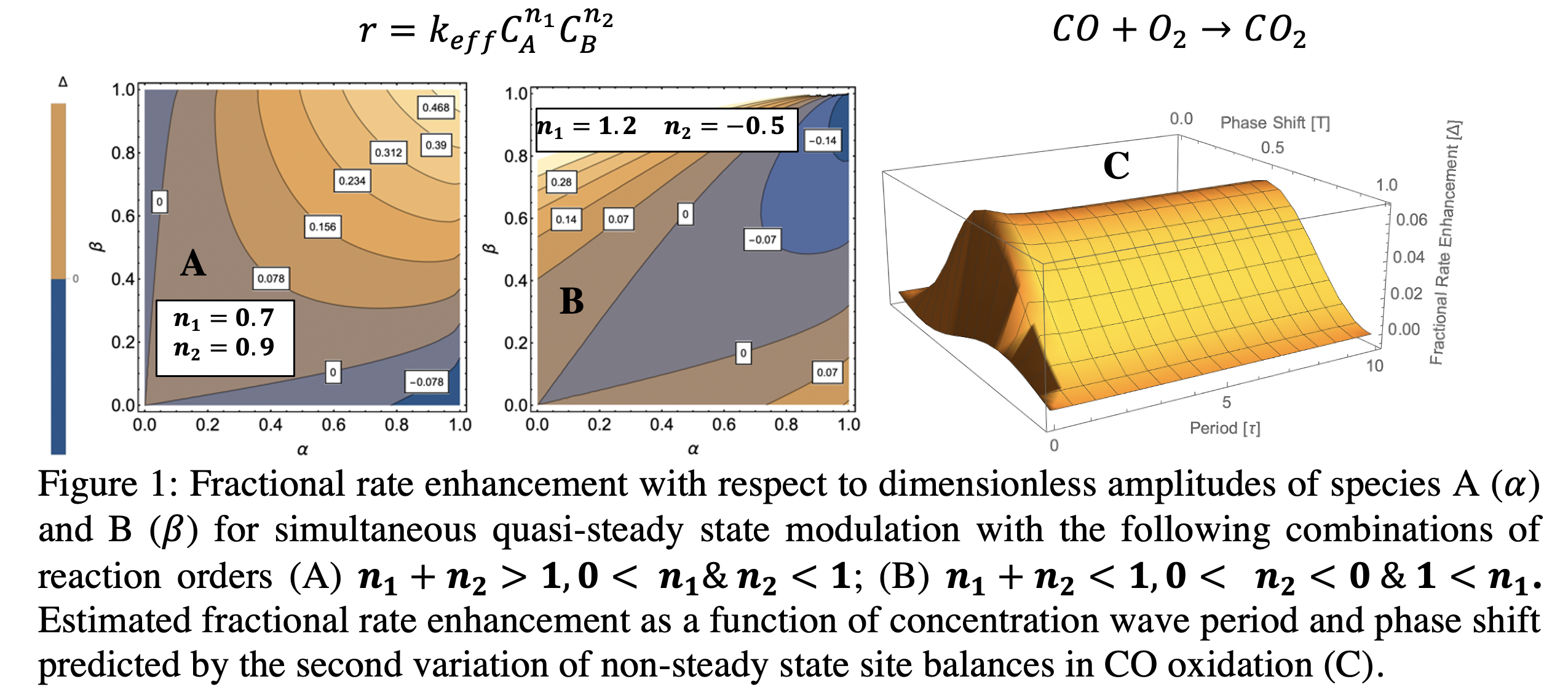(5d) Pi-Criterion Analysis of Non-Steady State Catalytic Oxidation Reactions
AIChE Annual Meeting
2022
2022 Annual Meeting
Catalysis and Reaction Engineering Division
Dynamic and Transient Reactor Operation
Sunday, November 13, 2022 - 4:24pm to 4:42pm
Higher frequency concentration modulation provides further complications arising from accumulation effects on catalyst surfaces. Thus, global kinetic descriptions may lack key attributes thereby preventing an accurate quantification of modulation effects. We consider two examples, the oxidation of carbon monoxide (CO) and selective oxidation of butane to maleic anhydride (MAN). Locating regions of dynamic enhancement in such complex parameter spaces is plausible by applying second variation optimization methods to the microkinetic surface balances. Fig. 1C shows the second variation estimate of local rate enhancement for CO oxidation which suggests enhanced performance for large period, out-of-phase operation. The analysis shows good agreement with literature studies [1] without the need for extensive numerical solutions of the governing equations.
[1] Lie, A. B. K., Hoebink, J. & Marin, G. B. Chem. Eng. J. Biochem. Eng. J. 53, 47–54 (1993).
